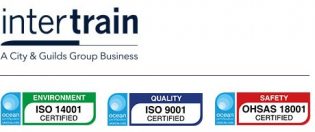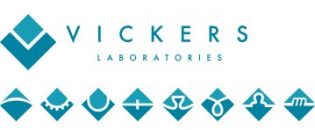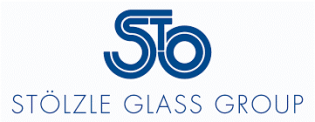While strategic planning focuses on long-term goals and company vision, tactical planning looks at the specific actions and steps needed to achieve those goals. Think of strategy as deciding the ultimate destination and tactics as the method for getting there.
For example, if you wanted to get from London to Edinburgh, your strategic plan might be to head north. Your tactical plan would determine the type of transport you use – car, train, bus – and the route you take.
In business, the strategic plan looks at the big picture, and the tactical plan looks at the short and medium-term objectives and actions. The strategic plan will rarely change, but the tactical plan can be flexible, allowing you to adapt as your business evolves.
Selecting the right tactical models
There are a range of tactical models that can be applied to businesses of all sizes and sectors. These include Lean, Six Sigma, the 7Ps and Kotter’s 8-step change model, as well as many more. The right models for your business will depend on what you are trying to achieve.
5 fundamental principles of Lean
Lean is a tactical model that aims to add value for the customer, reduce waste and facilitate continuous improvement. The five principles are as follows:
Defining value: defining value is all about determining what customers want, how they want it to be delivered, and how much they can afford to pay. What problems are they looking to solve? What outcomes are they trying to achieve? What do they perceive as valuable?
Value stream mapping: this involves mapping your workflow, looking at every step and process that takes your product from raw material to the finished item. Remove any steps that offer no value to the customer.
Create flow: Once you’ve removed unnecessary steps and processes from your value stream, you need to ensure the remaining steps run smoothly without interruptions or delays. This may mean creating cross-functional departments or training employees to be multi-skilled.
Establish pull: the goal of a pull-based system is to limit inventory and work in progress. This means not having huge stockpiles of products or multiple projects open indefinitely. By working backwards through your value stream, you can ensure products are created at the time they are needed, in the quantities needed.
Continuous improvement: every employee should strive towards perfection. This means always looking for ways to improve. How can processes be made more efficient? How can customer needs be met more effectively? How can waste be reduced further?
Lean defines anything that does not add value to the customer as waste. The idea of Lean is to eliminate as much waste as you can, making your processes as efficient as possible.
Six Sigma: DMAIC
DMAIC – define, measure, analyse, improve, control – originates from Six Sigma, but can be used as a standalone tactical model. It’s a great tool for problem-solving and is often used to optimise or improve processes.
Define: the first step is to define the problem. What is going wrong? What are you trying to fix?
Measure: next you need to map out the current process to establish a baseline and collect data to help you understand the cause of the problem.
Analyse: after mapping out the processes and collecting data, you need to analyse the data to determine the root cause.
Improve: produce as many ideas as possible for improvement and decide on the best solution. If possible, test the proposed solution on a small scale and then refine it as necessary.
Control: once implemented, it is important to measure the success of the new process and look for additional areas of improvement.
DMAIC is similar to the Plan-Do-Check-Act approach (PDCA) used in Lean. Both approaches can be used to improve your processes.
The marketing mix: 7Ps
Are you launching a new product or service or trying to attract a new audience? This is where the marketing mix comes in. The marketing mix is a list of considerations – referred to as the 7Ps.
Product/service: what are you selling, and which features and benefits will customers be attracted to?
Price: how much are your target customers prepared to pay?
Place: where would your customers go to purchase the product (e.g. website, physical store, third-party supplier)?
Promotion: how will you let customers know about the product?
People: who will be involved (design team, marketing team, sales team, customer services team)?
Process: how is the product or service delivered?
Physical evidence: how will customers experience the product (branding, packaging etc)?
By considering each of the 7Ps in detail, you are more likely to create customer-centric products and services, improving your chances of success.
Kotter’s 8-step change model
Any change, no matter how small, should be planned. Before implementing change, you should consider the impact on the wider business and anyone with a vested interest (employees, stakeholders, customers, suppliers etc).
Kotter’s 8-step change model can be a useful tool for implementing and embedding change effectively.
Create urgency: demonstrate the need for change and get buy-in from stakeholders.
Form a powerful coalition: convince people that change is necessary and appoint change leaders.
Create a vision for change: a clear vision helps everyone understand why you are asking them to do something.
Communicate the vision: talk about the change often and address any concerns openly and honestly.
Empower action: recognise and reward people who are making change happen and address any resistance to change.
Create quick wins: set short-term goals that are easily achievable to motivate change teams and sway critics.
Build on the change: after every win, evaluate what went right and look for improvements.
Make it stick: talk about the progress whenever possible and continue to share success stories.
Change doesn’t happen overnight. You need to create the right environment for change and get engagement before implementing the change. If you do this, you’ll find it easier to sustain the change.
Building your tactical toolbox
When you familiarise yourself with a range of tactical models, it’s like creating a tactical “toolbox” – all you need to do is select the right “tool for the job” (or the right tactic for the objective).
For example, if you are focusing on marketing, you might use the 7Ps, whereas if you are trying to implement change, you might work to Kotter’s 8-step change model. Lean and Six Sigma are often used in manufacturing, but the principles can be applied effectively in other sectors too.
As a leader, you should always be looking to build your tactical toolbox, researching different tactical models and using critical thinking to decide which is most likely to help you meet your objective.
Developing Tactical Leaders
As a manager or leader, there’s always something new to learn or a skill you can improve and develop. Organisations need to support managers and leaders in this development, but you also need to invest in yourself.
Getting formal leadership and management training will not only help you build your leadership skills, it will also help you grow in confidence, and increase your chances of career progression.
Alternative Partnership delivers ILM-accredited Leadership and Management training programmes to support you and your teams in gaining formal, nationally recognised qualifications.
Find out more about our current ILM courses here or get in touch to discuss how our services could benefit you.












